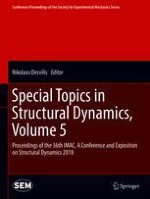Abstract
The existence of free boundary conditions is frequently assumed for Experimental Modal Analysis (EMA) of a structure. However, free-free conditions can only be approximated because the structure must be supported in some manner. Therefore, comparing simulated data with experimental data can be deceiving, because these suspensions falsify modal parameters especially structural damping and stiffness. The current scenario of structural analysis is more towards focusing on modal updating or correlation, rather than the simulation results (FE) or the experimental results. So it is imperative to bridge the gap between FE and EMA, by carefully studying various parameters.
To overcome these drawbacks, levitation is suggested as a truly free-free suspension method. The levitation method was developed to allow a non-destructive, adaptable, and completely contactless approach for material testing: the structure under test is suspended on a thin film of pressurized air providing an aerodynamic bearing, levitating the specimen. Two suspension devices were constructed. Pressurized air is circulated into a casing with a single outlet (“air cushion”) or a fine grid of outlets (“air bed”).
A study was performed to investigate the influence of the support conditions on the modal parameters eigenfrequency and damping. Tested specimens were a brass plate, a stainless steel plate and two composite material probes. The tested suspension methods were (a) foam mat, (b) air cushion and (c) air bed. Modal tests were performed using a Scanning Laser Doppler Vibrometer (SLDV) and an automatic modal hammer for excitation. Evaluations of the measurements were performed manually.
The results showed that the detected eigenfrequencies of the metallic specimen have a variation below ±0.3% for the tested suspension methods. This variation is 10 times higher for the composite plates and lies between ±3%. The damping ratios of the levitation suspensions show the different material behavior of metallic and composite specimen: damping ratios of metallic specimen lie between 0.05–0.5% whereas damping ratios of composite plates are ten times higher and lie between 0.3% and 3%. The damping ratios measured with the air cushion are smaller than the damping ratios for the air bed supporting the hypothesis that a laminar air film under the specimen leads to less additional damping.
The study shows that EMA can be performed on metallic and composite specimens using contact-less suspension methods. Especially for light-weight material specimens where EMA cannot be performed or where the results are not reliable, the contact-less suspension (levitation method) can be used.
